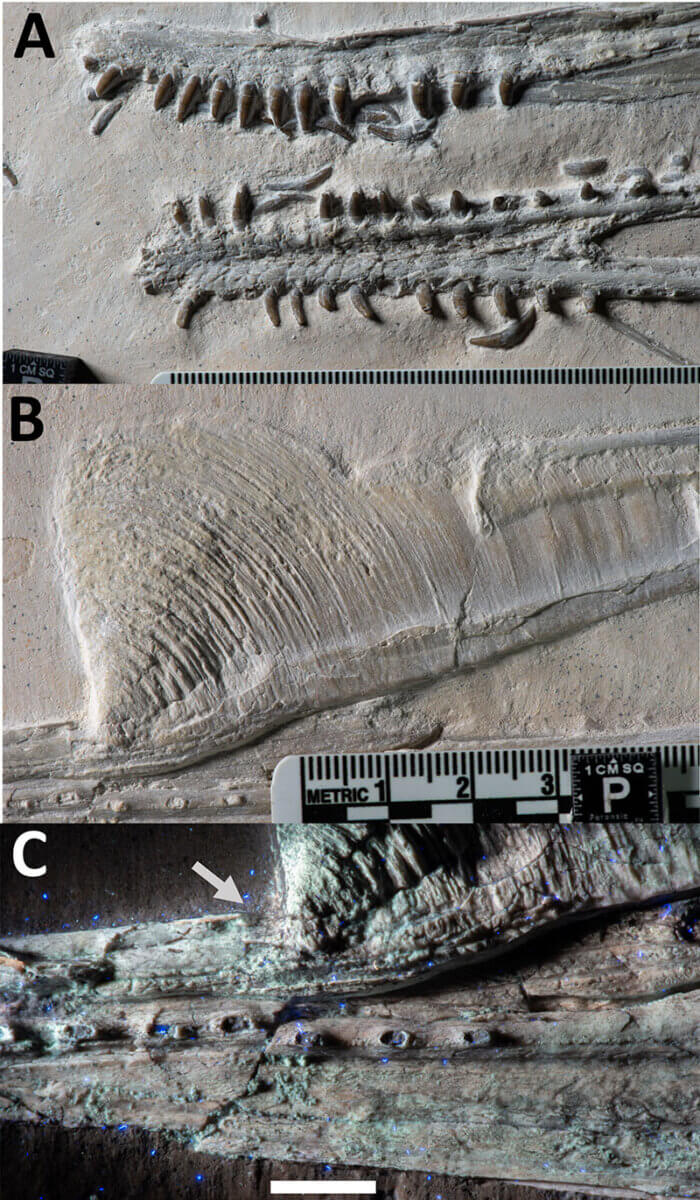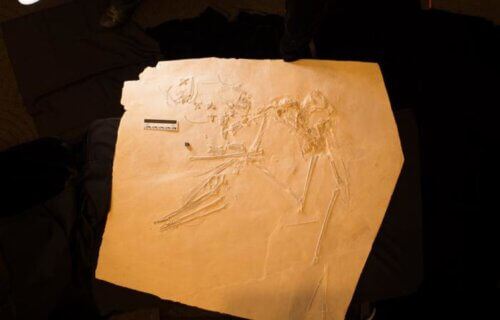LONDON — An international team of researchers are all shook up after their latest discovery. Dubbed “Elvis” because of its prominent pompadour-like bony crest on its skull, American, British, and German scientists recently found a 145-million-year-old extinct flying reptile in Bavaria, Germany.
The Petrodactyle wellnhoferi coexisted with dinosaurs. Remarkably, the Petrodactyle fossil showcases an almost complete skeleton with an extraordinary level of detail.
“Big though this crest is, we know that these pterosaurs had skin-like extensions attached to it, so in life Petrodactyle would have had an even larger crest,” says Dr. David Hone, the study’s lead author from Queen Mary University of London, in a university release.
While many pterosaurs boasted bony crests mainly for sexual signaling (mating), the Pterodactyle displays the most prominent crest ever observed in a ctenochasmatid. A unique aspect of this discovery is the clarity of the specimen under UV light, revealing intricate details.
“The use of UV Induced Fluorescence digital photography provided the ability to discern fine structures, small bones and provided additional information regarding the structures of the bony crest which aided in the interpretations and conclusions of this unique new species,” says René Lauer of the Lauer Foundation.

Despite still being in its late teenage years by pterosaur standards, the Petrodactyle exhibits an impressive wingspan of about two meters.
“The specimen was located in a quarry which is producing scientifically important fossils that provide additional insights into Late Jurassic Pterosaurs,” says Bruer Lauer, also of the Lauer Foundation. “This research is a great example of the benefits of cooperation between amateur collectors, commercial fossil dealers, our Foundation and research scientists to advance science.”
With a long jaw filled with numerous tiny teeth, the Petrodactyle would have excelled at capturing small aquatic prey. Yet, unlike many of its peers, it possessed an expansion at the skull’s rear for attaching sizeable jaw muscles, bestowing it with a formidable bite.
“It is amazing to document an increasingly wide range of adaptations,” notes Frederik Spindler of the Dinosaurier Museum in Germany. “Pterosaurs were a fundamental part of the Jurassic ecology.”
The study was published in the journal Palaeontologia Electronica.

